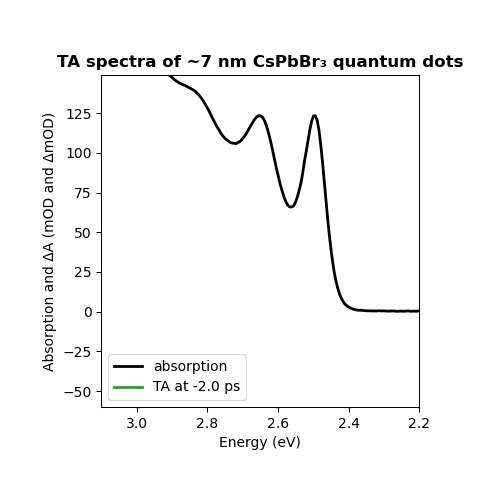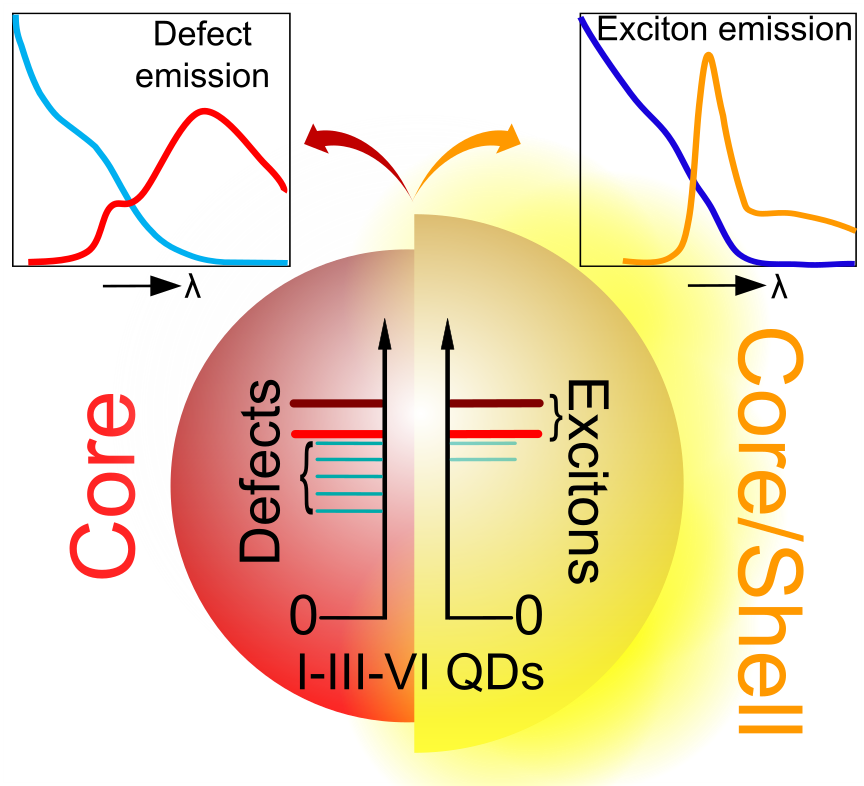Optical properties of quantum dots
Due to quantum confinement effects, quantum dots exhibit strongly localized excitons. Understanding how and why such excitons form in these tiny semiconductors is key in understanding their quantum properties. To do so, we employ a wide variety of steady state and time resolved spectroscopy techniques to understand the quantum nature of quantum dots. This includes ultrafast spectroscopy, such as Transient absorption (TA) and time resolved photoluminescence spectroscopy. All of these techniques give as a complete picture the life of an exciton in these tiny quantum semiconductors, starting from its creation after excitation, through its relaxation, and all the way to its emission of light. Understanding the fine details of such process allows us to understand how to tailor QDs for classical light applications, such as LEDs and lasers, as well as quantum light sources, such as single photon emitters.

Selected works on this topic:
- Biexcitonic Optical Gain in CsPbBr3 Quantum Dots. ACS Photonics, 11, 5350–5357 (2024)
- Efficient Energy Transfer from Quantum Dots to Closely-Bound Dye Molecules without Spectral Overlap. Angew. Chem. Int. Ed., e202420658 (2024)
- Confined Excitons in Spherical-like Halide Perovskite Quantum Dots. Nano Lett. 22, 8810–8817 (2022)




